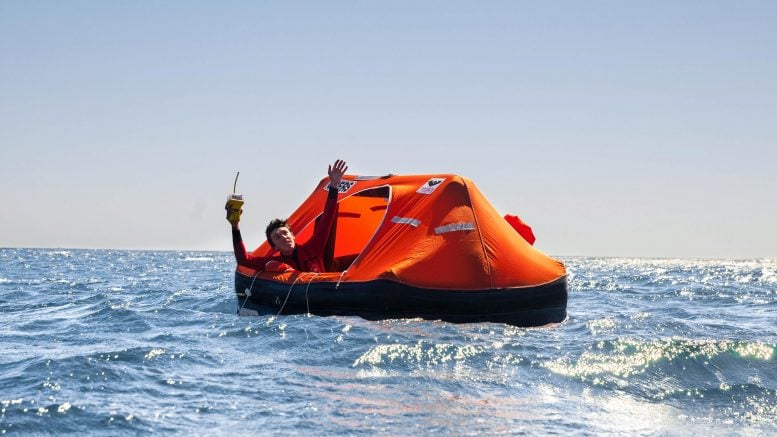
Stranded sailors in liferaft use an emergency position-indicating radio beacon (EPIRB) to call for help. Credit: ESA
April 6 was 406 Day – the annual campaigning day to spread awareness of the importance of emergency beacons, and the satellites that pick up their signals, including Europe’s Galileo constellation. As well as letting people across the world find their way, Galileo also serves to detect SOS messages and relay them to authorities, contributing to saving many lives.
Such detections can happen anytime, but one recent high-profile incident happened in the midst of the Vendée Globe solo round-the-world yacht race. Skipper Kevin Escoffier had his boat smashed to pieces by fierce waves in the Southern Ocean.
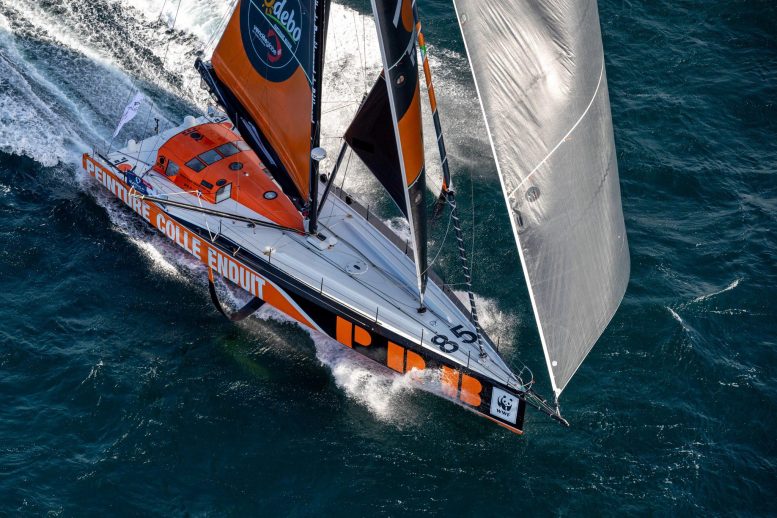
Vendée Globe race skipper Kevin Escoffier’s PRB yacht was broken up in rough seas on November 30, 2020. The solo yachtsman took to his life raft and was rescued by competitor Jean Le Cam the following day, thanks to an SOS signal that gave his position, relayed by Galileo satellites through the international Cospas-Sarsat system. Credit: Jean-Marie Liot/PRB #VG2020
He took to his life raft. As it hit the water it automatically activated his rescue beacon, transmitting a 406 MHz SOS signal for automatic pickup by participating satellites, courtesy of the Cospas-Sarsat satellite-based emergency detecting and locating system. The signal allowed the race authorities to localize Kevin’s position within a matter of minutes and send nearby boats to the rescue.
The only system that can independently locate a beacon anywhere on Earth’s surface, Cospas-Sarsat has helped save thousands of people since it was first established in 1982. Originally the system operated through transponders hosted aboard either low-Earth orbit or geostationary satellites.
In the last decade Galileo joined Cospas-Sarsat – supported by the European Commission, the system’s owner – driving a significant increase in performance. Because they have such a high orbital altitude, at 23,222 km (14,429 mi) up, while still moving steadily through the sky, Galileo satellites combine broad views of Earth with the ability to facilitate quick determination of the position of a distress signal through a combination of time-based and Doppler ranging.
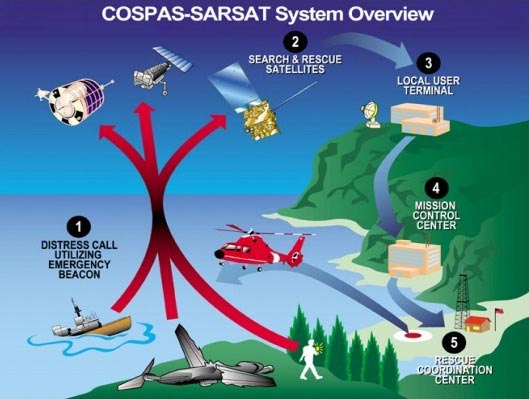
For three decades the Cospas–Sarsat system has used relays on satellites such as Europe’s MSG and MetOp to pick up distress calls from ships and aircraft. Credit: Cospas-Sarsat
406 Day
International 406 Day – taking its name from the radio frequency used by Cospas-Sarsat beacons, and the US order of today’s date – seeks to remind beacon users to take care to check their batteries and functionality. Such beacons are used aboard boats and ships, also aboard aircraft, and are also carried by hikers in the wilderness – anywhere beyond the reach of standard phone-based emergency services.
All the same, an SOS signal can reach the authorities surprisingly swiftly, within a few minutes. First, the signal from the beacon is detected automatically by the search and rescue payload aboard participating satellites – often more than one at once – then pinpoints its source on Earth’s surface.
Next, this information is relayed – via a set of stations on the corners of Europe, in the case of Galileo-detected signals – then passed to the nearest national rescue center, at which point the rescue can begin.
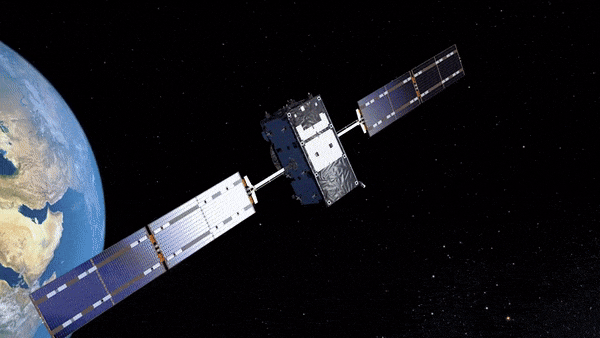
Galileo satellites are placed in medium orbits, at 23,222 km (14,429 mi) altitude along three orbital planes so that a minimum of four satellites are visible to user receivers at any point on Earth. The satellites continuously broadcast navigation messages, allowing receivers to pinpoint their position. They also relay search and rescue messages received worldwide. Credit: ESA
The beacons themselves are surprisingly compact in size, typically the size of a medium-sized flashlight. But the search and rescue payloads carried aboard the Galileo satellites in orbit are similarly modest. At only 8 kg (18 lb) in mass, these life-saving payloads consume just 3% of onboard power, with their receive-transmit repeater housed next to the main navigation antenna.
All but the first two of the 26 Galileo satellites in orbit carry these payloads, with two more satellites scheduled to add to their number later this year.
Galileo’s Search and Rescue service is Europe’s contribution to Cospas-Sarsat, operated by the European Global Navigation Satellite System Agency, GSA, and designed and developed by ESA.
The Cospas-Sarsat satellite repeaters are supplemented by a trio of ground stations at the corners of Europe, known as Medium-Earth Orbit Local User Terminals (MEOLUTs), based in Norway’s Spitsbergen Islands, Cyprus, and Spain’s Canary Islands and coordinated from a control center in Toulouse, France.
This trio is soon to become a quartet, with a fourth station on France’s La Reunion Island in the Indian Ocean.
Galileo’s participation in Cospas-Sarsat has led in turn to a service innovation – from last year, Galileo has been replying to SOS signals with ‘return link messages’, assuring those in peril that their signals have been received and help is on the way.






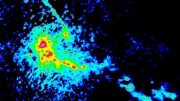
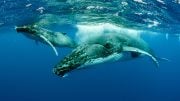

Be the first to comment on "406 Day: Celebrating Galileo Saving Lives"